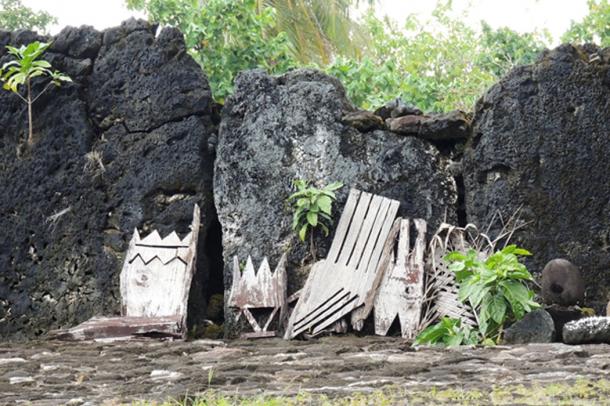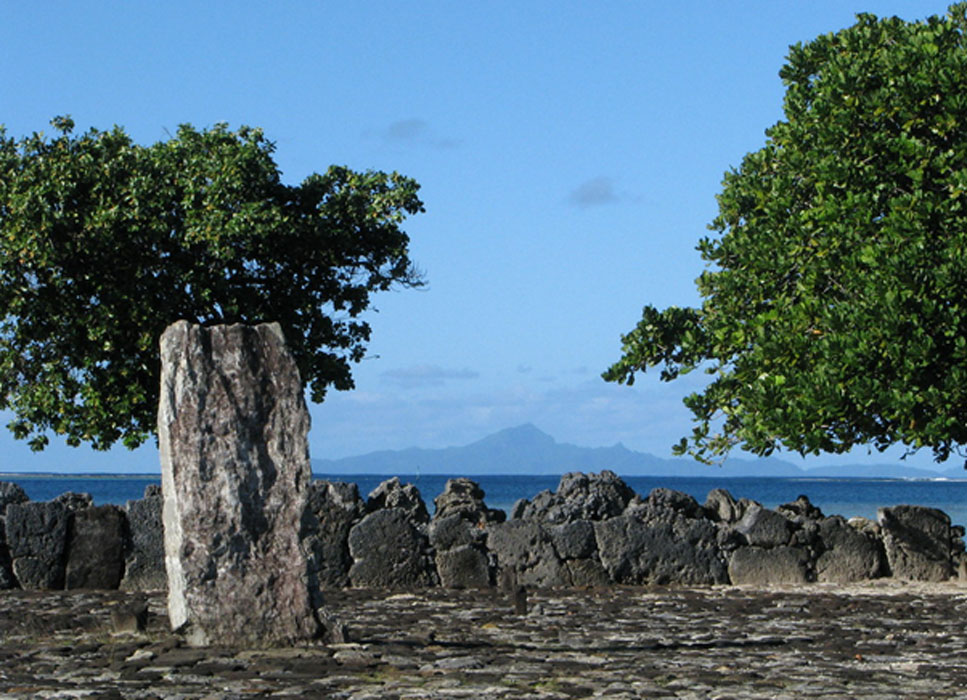Taputapuatea Marae, An Ancient Site of Human Sacrifice and Communing with the Gods
French Polynesia is renowned for its beauty and friendly people, but still relatively little is known about its history. The sacred site of Taputapuatea marae is of great significance to the people of the Pacific since it was an important religious and political center and is regarded as the origin of the Polynesian people. These islands are therefore both a historical and an archaeological gem.
History of Taputapuatea Marae
Taputapuatea marae, believed to date from roughly 1000 AD is located at the heart of the cultural landscape of Taputapuatea, on the island of Raiatea. The island is one of the Society Islands, part of the territory of French Polynesia, and is revered by many Polynesians.
The marae was a religious and public space where the community gathered for ceremonies and rituals. Built on Cape Matahira-i-te-ra', believed to be an area where the gods lived, the area was one where humans and the gods could interact.
The original marae was dedicated to the creator god in the Polynesian pantheon, Ta'aroa, originally a sea-deity, but appears the priests at Taputapuatea turned this god into the supreme god at some stage. However, by at least the 18 th century the ceremonial and religious space was dedicated to the war-god, Oro. The worship of this god was associated with human sacrifices and European sailors described how captives were sacrificed here by having their skulls caved in with maces.

Una, symbolic gifts left at the marae by worshippers (Kennedy, H & R/ CC BY NC-ND 2.0)
Because the marae was such an important religious center, visitors from neighboring islands came here to perform ceremonies and as a result political alliance was developed amongst the various islands. In the early 18th century, however, it collapsed in violence and many people fled the island. Later, in 1760, raiders from Bora Bora sacked and plundered the marae and it was abandoned until the Society Islands were occupied by the British and then the French.
By the 20th century the marae was in a state of disrepair and neglected. It was reconstructed by local people under the supervision of archaeologists and today many Polynesians regard Taputapuatea marae as their spiritual home. Sadly, rising sea levels are threatening some parts of the site.
Taputapuatea Marae and the Origin of the Polynesian Triangle
It appears that Taputapuatea was where navigators and sailors from different islands would share their knowledge and swap ideas on boat-building. As a result, this sacred landscape also played a pivotal part in the migrations that populated the Pacific Islands.
- Where Did the Polynesians Really Come From?
- Maori Artifacts Indicate Early Polynesian Settlement on New Zealand Island
- Talietumu Fort, Wallis and Futuna: The Fortress for a King Whose Feet Could Never Touch the Ground

A tiki of Taputapuatea marae (CC BY 2.0)
French Polynesia is seen as being at the center of the Polynesian triangle which stretches from Hawaii, to New Zealand, and across to Easter Island. When the people from what is now the Society Islands travelled to the southern and eastern Pacific in the Middle Ages, they took a stone from the Taputapuatea marae with them on their journey. When they settled in their new homes, they laid the stone in their new maraes.
The Ahu and Tiki of Taputapuatea Marae
The marae is an open area, cleared of vegetation, overlooking a blue lagoon. Rectangular in shape, the space is paved with stones and enclosed by low walls, three built from volcanic rock and the back wall constructed from stone slabs.

The center stone of Taputapuatea Marae (Amanderson2 / CC BY 2.0)
Around the marae are sacred spots constructed from stones and at the center of the space stands a rock called ahu or a'u which may have represented the Polynesian war-god. There are also a number of stone sculpted tiki representing human figures, which may symbolize dead ancestors or kings.
The original marae once held god-houses where idols were once stored on wooden platforms, but they were all destroyed by the raiders from Bora Bora.
Getting to Taputapuatea Marae
It is quite easy to fly to Tahiti and from there one can visit the island of Raiatea. Securing the services of a guide and hiring a local taxi driver is advised as there is no information available other than in Tahitian.
Top image: Taputapuatea Marae. Source: Photo by Abel, J
By Ed Whelan
References
Emory, K. P. (1988). The societies. French Polynesia: A Book of Selected Readings, 32
Salmond, A. (2012). Tupaia, the navigator-priest. Tangata o le Moana: New Zealand and the people of the Pacific, edited by Sean Mallon, Kolokesa Māhina-Tuai, and Damon Salesa, 57-76
Wallin, P., & Solsvik, R. (2011). The place of the land and the seat of the ancestors. Kon-Tiki Museum. Occasional Papers, 12, 79-107
Available at: http://www.diva-portal.org/smash/record.jsf?pid=diva2%3A579351&dswid=news



















